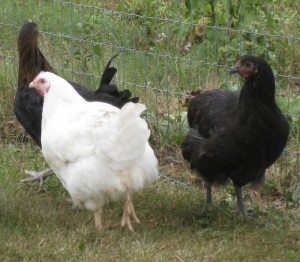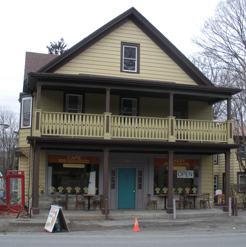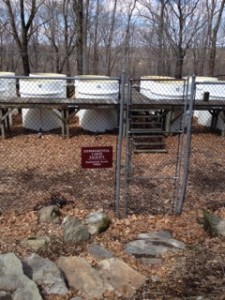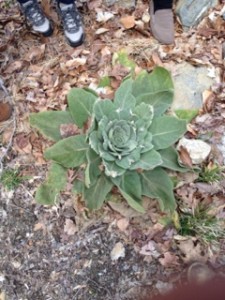On May 7, I was fortunate enough to go on a trip to Wild Hive Farm, a mill and bakery located in Clinton, NY. This farm was founded to promote sustainable agriculture in the Hudson Valley through grain based local agriculture.
Wild Hive Farm was founded by Don Lewis in 1982. He started by selling honey based baked goods and other products at Union Square Greenmarket in New York. The Wild Hive Farm Bakery began in Don Lewis’ kitchen, where he experimented with producing local and tasty baked goods. In June, 2008, the business moved to commercial kitchen and store front premises in Clinton Corners. In November, 2008, Wild Hive Farm Store, and Café Bakery opened and began serving customers with breakfast, lunch, dinners and baked goods. In 2009, as sales of flour and milled products increased, it became necessary to move the milling operation to larger premises and Don began renovation of a nearby farm space to house his Grain Project. The farm now produces Wild Hive Farm eggs and chicken and in time, hopes to sell its own beef and pork. At the storefront location in Clinton Corners, the Wild Hive Farm Store and Café provides meals and products based on seasonal, locally grown ingredients. Product offerings included Wild Hive brand grains, flours and breads, and both refrigerated and frozen prepared foods.
Wild Hive Flours are developing a strong following among chefs, commercial bakers and home bakers. Don plans to expand the offerings of the Wild Hive Community Grain project as time goes on and to use the Farm’s facilities as a means of teach sustainable agriculture.
Don Lewis is as committed today as he has always been to the building of a sustainable grain based food system here in the Hudson River Valley. He is frequently invited to speak to sustainable agriculture groups. Our Environmental Studies class was fortunate enough to hear a talk from Don Lewis on April 23. To hear the talk click here.







